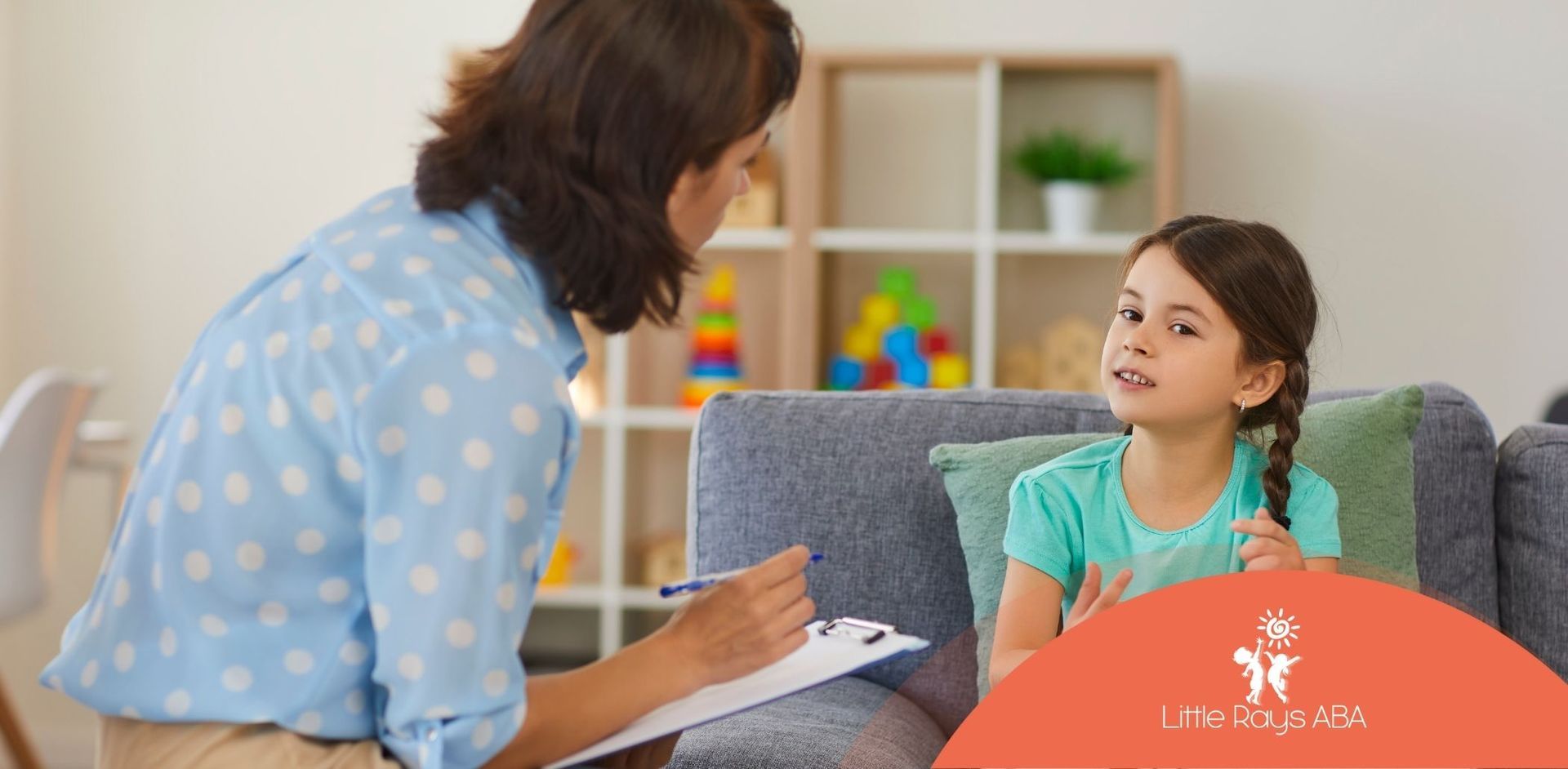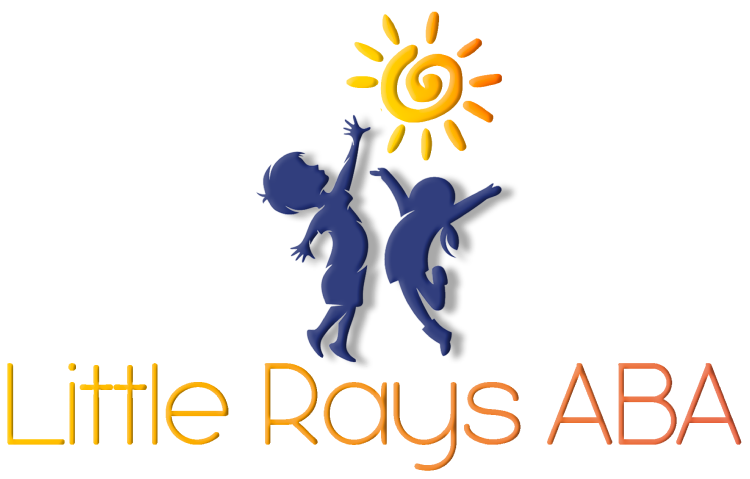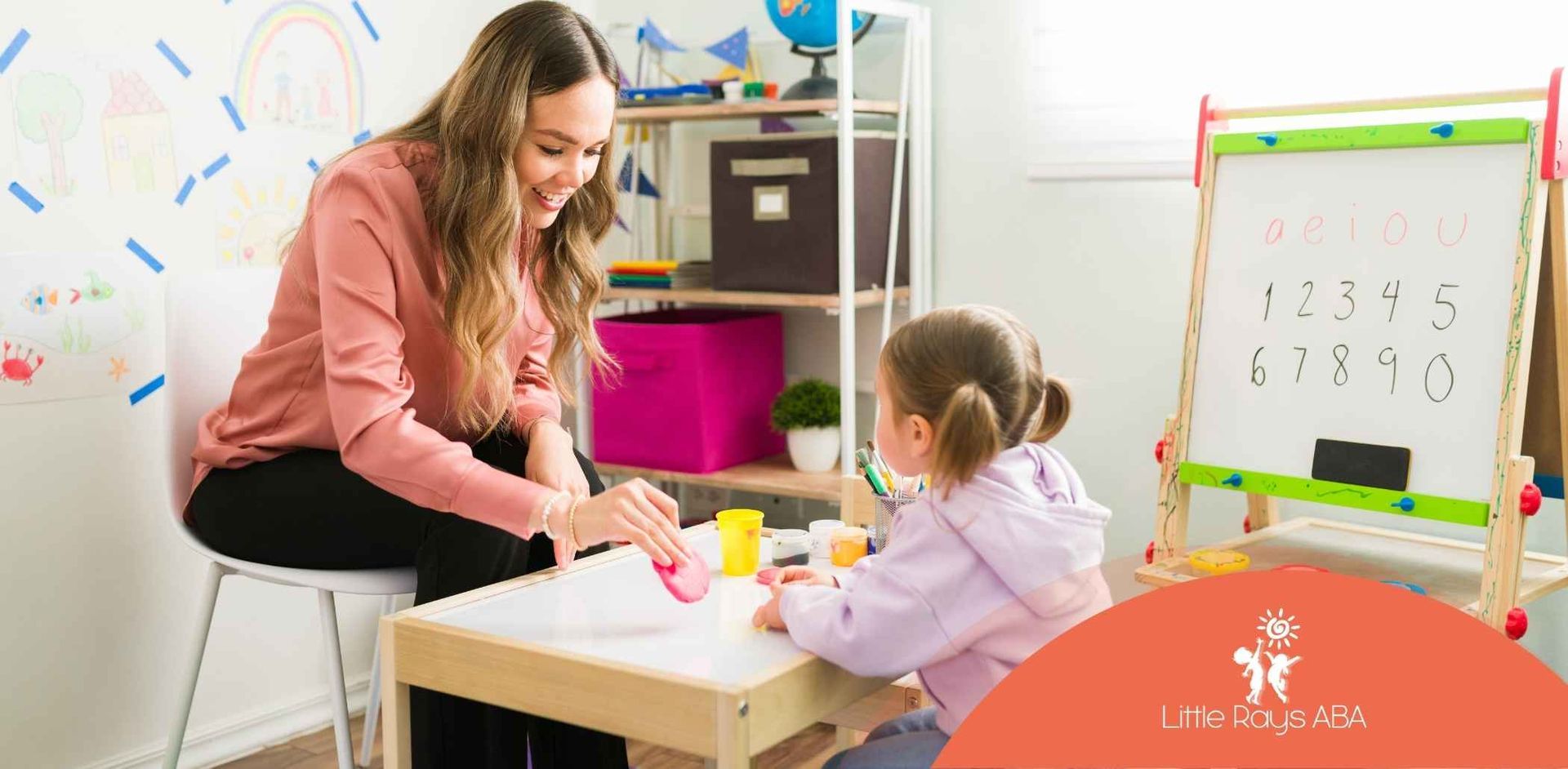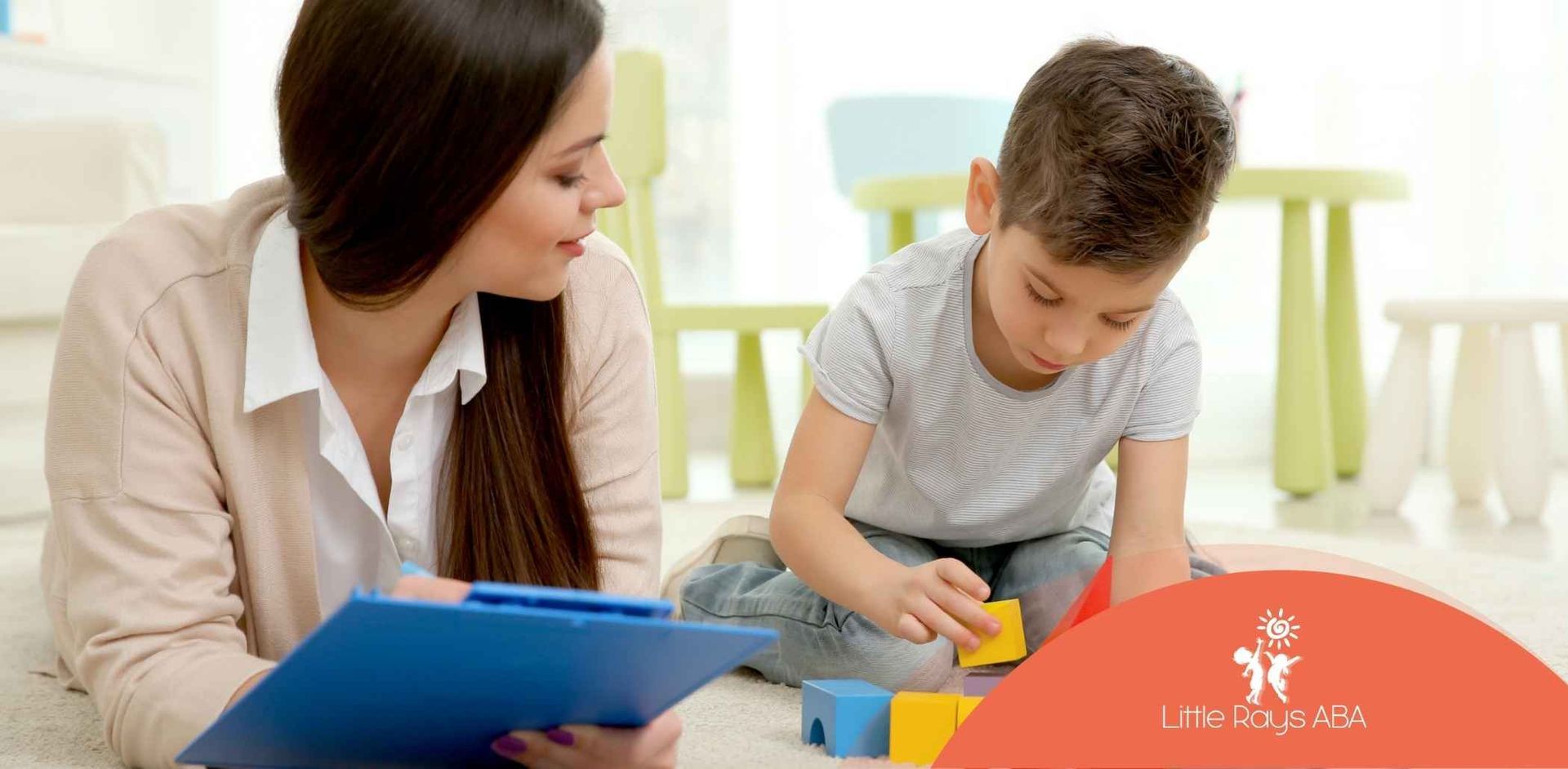
ABA Therapy for ADHD: Changing Lives
Attention-deficit hyperactivity disorder (ADHD) is a common neurodevelopmental disorder often presenting in young children. Marked by symptoms such as inattention, hyperactivity, and impulsivity, ADHD can pose significant challenges in a child's academic, social, and personal life, which can benefit from disease control strategies. Early intervention is key, and ABA therapy offers a beacon of hope for families seeking effective and sustainable treatment options.
Understanding ADHD and Its Challenges
Before exploring the potential of ABA therapy, it's crucial to understand the complexities of ADHD, as they often influence a child’s behavior. More than just a case of "kids being kids," ADHD involves underlying neurological differences affecting attention regulation, impulse control, and executive functioning.
These challenges can manifest in various ways, from difficulty focusing in class and completing assignments to struggling with social interactions and emotional regulation. Recognizing these signs early on is critical for seeking timely and appropriate support.
Definition and Symptoms of ADHD
Attention-deficit hyperactivity disorder (ADHD) stands as one of the most common neurodevelopmental disorders of childhood. It is characterized by persistent patterns of inattention, hyperactivity, and impulsive behavior, which can significantly impair daily functioning.
Symptoms of ADHD typically emerge before the age of 12 and may persist into adulthood. Inattentive symptoms include difficulty sustaining attention, forgetfulness, disorganization, and a tendency to get easily distracted.
On the other hand, hyperactivity manifests as excessive restlessness, fidgeting, and difficulty engaging in quiet activities. Impulsivity and impulsiveness, as the name suggests, involves acting without thinking, interrupting others, and struggling to wait their turn.
Common Misconceptions About ADHD
Despite its prevalence, ADHD is often shrouded in misconceptions. Some mistakenly believe it's merely a disciplinary problem or a lack of willpower. However, ADHD is a complex neurodevelopmental disorder influenced by genetic, environmental risk factors, and neurological factors.
It's also important to note that ADHD presents differently in each individual. While some may exhibit primarily inattentive symptoms, others may have a hard time with hyperactivity and impulsivity. These different types of ADHD necessitate individualized approaches to treatment.
Additionally, while some children with ADHD may exhibit behavioral issues, particularly toward authority figures, it's not always the case. Conditions like oppositional defiant disorder can co-occur with ADHD, but it's crucial to differentiate these distinct diagnoses for effective intervention.
Introduction to ABA Therapy
Applied Behavior Analysis (ABA) therapy is a scientifically grounded approach widely recognized for its efficacy in addressing problematic behaviors, behavioral challenges, and skill deficits associated with various disorders, including ADHD. At its core, ABA focuses on understanding the relationship between behavior, environment, and learning.
Through systematic observation, individualized interventions, and positive reinforcement, ABA therapists empower individuals with ADHD to develop essential skills, manage impulsivity, improve focus, and navigate social situations with greater ease.
Principles of Applied Behavior Analysis
At the heart of ABA lies the science of behavioral analysis, which explores how environmental factors influence behavior and how learning occurs. ABA techniques aim to modify behavior by changing these environmental factors and providing targeted interventions.
One of the cornerstones of ABA therapy is positive reinforcement—rewarding desired behaviors to increase their likelihood of recurring. Rewards can range from verbal praise and small tokens to access to preferred activities. By consistently pairing positive reinforcement with desired behaviors, individuals learn to associate those behaviors with positive outcomes.
Furthermore, ABA interventions are highly individualized and tailored to specific goals. Therapists conduct thorough assessments to identify target behaviors, understand their underlying functions, and develop personalized treatment plans that address the individual's unique needs and strengths.
How ABA Therapy Is Different from Other Therapies
While various therapies exist to address behavioral and emotional challenges, ABA therapy stands distinct in its focus on observable behavior and environmental influences. Unlike cognitive behavioral therapy (CBT), which delves into thought patterns, ABA concentrates on modifying behaviors through direct interventions.
While both ABA and CBT fall under the umbrella of behavior therapy, ABA adopts a more structured and data-driven approach, meticulously tracking progress and adjusting interventions based on objective observations.
Additionally, ABA therapy differs from traditional psychotherapy in its emphasis on skill acquisition and behavior modification rather than exploring underlying emotional issues. While ABA therapists may address emotional regulation indirectly through behavioral interventions, the primary focus remains on empowering individuals with tangible skills to manage their challenges.
Effectiveness of ABA Therapy for ADHD
The effectiveness of ABA therapy for attention deficit hyperactivity disorder (ADHD) is not anecdotal but substantiated by a growing body of research. Numerous studies have documented significant improvements in attention, impulse control, social skills, and overall quality of life for children undergoing ABA therapy.
Moreover, ABA therapy's focus on teaching self-management skills empowers individuals with ADHD to take ownership of their behavior, fostering long-term benefits that extend beyond the therapeutic setting.
Scientific Studies Supporting ABA Therapy
Scientific evidence consistently demonstrates the efficacy of ABA therapy as an ADHD treatment. The CDC notes that a comprehensive review of studies published in the Journal of Attention Disorders concluded that behavioral interventions, including ABA, effectively reduce disruptive behaviors and improve attention in children with ADHD.
Researchers highlight the power of positive reinforcement in shaping desired behaviors. By consistently rewarding positive actions, such as staying on task, following instructions, and interacting appropriately with peers, ABA therapists create a positive learning environment that fosters skill development.
Moreover, studies show that ABA therapy's positive effects extend beyond the immediate treatment period. Children who undergo ABA therapy often demonstrate sustained improvements in attention, impulse control, and social functioning, highlighting its long-term benefits.
Case Studies and Success Stories
Beyond statistical data, real-life case studies and success stories vividly illustrate ABA therapy's transformative impact on individuals with ADHD. Consider the example of a young boy named Ethan, who struggled with severe impulsivity and disruptive behaviors at school.
Prior to ABA therapy, Ethan frequently acted out in class, interrupting lessons, and engaging in aggressive behaviors toward his classmates. Through targeted interventions, including differential reinforcement of positive behavior and social skills training, Ethan learned to manage his impulsivity, navigate social situations appropriately, and develop meaningful relationships with his peers.
The following table summarizes Ethan's progress:
| Problem Behaviors (Before ABA) | Positive Behavior (After ABA) | New Skills Acquired |
|---|---|---|
| Frequent outbursts | Improved emotional regulation | Self-calming strategies |
| Difficulty waiting his turn | Patience and turn-taking | Social skills and perspective-taking |
| Disruptive classroom behavior | Increased on-task behavior | Attention and focus techniques |
Key ABA Techniques for Managing ADHD
ABA therapists employ a range of evidence-based techniques to address the specific challenges faced by individuals with ADHD. These techniques go beyond simple reward systems, focusing on shaping behavior, fostering self-awareness, and equipping individuals with practical tools to navigate daily life.
From differential reinforcement and discrete trial training to pivotal response training and self-management strategies, each technique plays a crucial role in creating a comprehensive and effective treatment plan.
Differential Reinforcement Techniques
Differential reinforcement techniques stand as a cornerstone of ABA therapy for ADHD, emphasizing the power of positive reinforcement to increase desired behaviors while reducing the frequency of negative actions. Rather than resorting to punishment, ABA focuses on rewarding good behavior, making it more likely to occur again.
One common differential reinforcement strategy involves ignoring or redirecting minor inappropriate behaviors while immediately rewarding desired actions, such as following instructions, completing tasks, or interacting appropriately with others. By consistently pairing positive reinforcement with good behavior, individuals learn to associate those actions with positive outcomes.
Moreover, differential reinforcement helps shift the focus from negative to positive interactions. Instead of constantly reprimanding or criticizing challenging behaviors, therapists and parents strive to create a positive and supportive environment where good behavior is consistently acknowledged and celebrated.
Role of Discrete Trial Training (DTT)
Discrete Trial Training (DTT) plays a crucial role in ABA therapy for ADHD. By breaking down skills into smaller, manageable parts, DTT focuses on intensive teaching, repetition, and positive reinforcement. This method is especially effective in tackling specific behavioral issues and enhancing impulse control in children with ADHD. Implementing structured learning environments, DTT helps individuals with ADHD develop new skills, improve attention span, and regulate their behavior more effectively, promoting positive behavior changes and long-term progress in managing symptoms.
Implementing Pivotal Response Training (PRT)
Implementing Pivotal Response Training (PRT) involves using natural learning opportunities to encourage communication and social behavior in children with ADHD. PRT focuses on motivating the child through their interests, fostering self-initiation, and improving their language skills. By targeting pivotal areas like motivation and self-management, PRT aims to create meaningful changes in behavior. This approach empowers children to take control of their interactions and responses, promoting a more independent and engaged learning experience. PRT can enhance social skills, communication abilities, and overall quality of life for children with ADHD.
Importance of Self-Management Skills
A crucial aspect of ABA therapy for ADHD patients involves equipping individuals with essential self-management skills, empowering them to take ownership of their own behavior and make positive choices independently. Self-management strategies foster a sense of agency, responsibility, and self-efficacy, promoting long-term success beyond the therapeutic setting.
Therapists employ various techniques to teach self-management, such as self-monitoring, goal-setting, and self-reinforcement. For instance, children might learn to track their own attention span, set realistic goals for completing tasks, and understand how child practices can help them reward themselves for exhibiting desired behaviors.
By providing individuals with the tools to monitor their own behavior, identify triggers for impulsivity or inattention, and implement strategies to stay on track, ABA therapy fosters independence, accountability, and self-regulation, essential skills for navigating the challenges of ADHD throughout life.
Practical Tips for Parents and Educators
While ABA therapists play a vital role in implementing interventions, the true success of ABA therapy lies in collaboration between therapists, parents, and educators. Consistency and generalization of skills are key, and by incorporating ABA principles into daily routines, parents and educators become active participants in the child's journey of growth.
From creating a supportive learning environment and implementing effective behavior management strategies to fostering positive communication and celebrating small victories, here are some practical tips to empower parents and educators.
Creating a Supportive Learning Environment
Creating a supportive learning environment is paramount for children with ADHD, both at home and in the classroom. This involves establishing clear expectations, maintaining consistency, and providing a sense of predictability to minimize distractions and foster focus.
Structure and routine are essential elements. Designate specific areas for learning and play, implement visual schedules, and break down tasks into smaller, more manageable steps. Consistency in schedules, rules, and consequences helps children feel secure and understand what's expected of them.
Minimizing distractions is crucial for maintaining attention. Opt for quiet study spaces, limit background noise and visual clutter, and provide noise-canceling headphones if necessary. Sensory tools, such as fidget toys or weighted blankets, can be helpful for some children.
Strategies for Daily Behavior Management
Effectively managing behavior throughout the day requires a proactive and positive approach, focusing on preventing disruptions, teaching appropriate alternatives, and reinforcing desired actions. Incorporating physical activity into daily routines can enhance focus and learning. Clear and concise instructions are essential—keep them simple, direct, and age-appropriate.
Implementing a reward system can be highly effective in motivating positive behavior. Utilize token economies, sticker charts, or a point system where children earn rewards for exhibiting desired actions, such as completing chores, staying on task, or displaying kindness. Additionally, coveted screen time can be a valuable reward kids strive for. However, remember that rewards don't always have to be tangible; praise, recognition, and special privileges can be equally motivating.
Addressing challenging behaviors calmly and consistently is key. When disruptions occur, avoid getting caught up in arguments or power struggles—instead, provide clear and immediate consequences, such as time-outs or loss of privileges, while also offering opportunities for the child to earn back those privileges through positive behavior.
Communication Techniques That Work
Effective communication is crucial for building rapport, fostering understanding, and encouraging cooperation. When interacting with children with ADHD, utilize communication techniques that resonate with their unique needs. For instance, provide clear and specific instructions, breaking down complex requests into smaller, more manageable steps.
Nonverbal cues, such as eye contact, calm tone of voice, and patient demeanor, speak volumes. Children with ADHD are highly attuned to emotional signals, so modeling patience and understanding can de-escalate challenging situations.
Parent training is an integral part of ABA therapy, equipping parents with the skills and confidence to implement techniques consistently at home. By working collaboratively with therapists and educators, parents become active participants in their child's journey toward success.
Comparing ABA with Other ADHD Interventions
When considering ADHD treatment options, it's crucial to understand the diverse approaches available and how they compare to ABA therapy. While medication is often prescribed for ADHD, its effectiveness varies among individuals, and potential side effects warrant careful consideration.
Furthermore, exploring the integration of ABA with other educational plans, such as Individualized Education Programs (IEPs), reveals a comprehensive approach that addresses the diverse needs of children with ADHD.
Medication vs. Behavioral Therapy
Stimulant medications are commonly prescribed for ADHD, and while they can be effective in improving attention and reducing hyperactivity for some individuals, their use also comes with potential drawbacks. Side effects, such as sleep problems, appetite loss, and mood swings, need to be carefully considered, especially for young children.
Behavior therapy, including ABA, offers a non-pharmaceutical approach to ADHD treatment. It focuses on teaching individuals practical skills to manage their symptoms, modify their environment, and develop healthier coping mechanisms that promote more positive, functional behaviors. While behavioral therapy requires consistent effort and may take time to show significant results, its benefits often extend far beyond symptom management.
Ultimately, the decision of whether to utilize medication, behavior therapy, or a combination of both depends on various factors, including the individual's specific needs, symptom severity, and personal preferences. Consulting with a qualified healthcare professional specializing in ADHD is crucial for making informed decisions.
Integrating ABA with Other Educational Plans
Integrating ABA principles into other educational plans, such as Individualized Education Programs (IEPs), can significantly enhance the learning experience for children with ADHD. IEPs provide a framework for tailoring educational goals, accommodations, and supports to meet the unique needs of students with disabilities.
By incorporating ABA strategies, such as visual schedules, positive reinforcement systems, and structured work systems, IEPs can create a more predictable and supportive learning environment, minimizing distractions and promoting on-task behavior.
Moreover, ABA principles can be integrated into group therapy settings, fostering social skills development and peer interactions. By teaching children with ADHD appropriate social behaviors, conflict resolution strategies, and turn-taking skills, group therapy complements individual ABA sessions and promotes generalization of skills to real-life situations.
When searching for autism therapists near me, it’s crucial to find professionals who specialize in creating personalized therapy plans tailored to each child’s unique needs. ABA therapy is a proven approach for children with ADHD, helping them develop crucial skills in focus, behavior, and social interactions. By working with experienced therapists who understand the nuances of ADHD, families can see meaningful improvements and lasting results. If you're ready to explore how therapy can help your child, consider reaching out to a trusted ABA provider near you for expert guidance and support.
Conclusion
In conclusion, ABA therapy has shown promising results in improving the lives of individuals with ADHD. By implementing principles of Applied Behavior Analysis and incorporating key techniques like DTT and PRT, this therapy offers effective strategies for managing ADHD symptoms. Scientific studies and success stories validate the effectiveness of ABA therapy, emphasizing its role in behavioral improvement. Parents and educators can benefit from creating a supportive learning environment and employing communication techniques to enhance daily behavior management. Understanding the benefits of ABA therapy in comparison to other interventions is crucial for informed decision-making. By integrating ABA therapy with educational plans, individuals with ADHD can experience meaningful progress towards achieving their full potential.
At Little Rays ABA, we specialize in using personalized ABA therapy to support children with ADHD, helping them improve focus, behavior, and social skills. Our dedicated team works closely with each family to create tailored therapy plans that promote independence and lasting progress. Whether it's developing better coping strategies or enhancing academic performance, we’re committed to helping children with ADHD reach their full potential. Ready to see how ABA therapy can make a difference in your child's life? Contact Little Rays ABA today to get started on the path to success!
Frequently Asked Questions
What age is best for starting ABA therapy for ADHD?
Early intervention during childhood is crucial for ADHD treatment. While ABA therapy can benefit individuals of all ages, the American Academy of Pediatrics recommends starting ABA therapy for young children, ideally around preschool age, as research suggests that this yields the most favorable outcomes.
How long does it typically take to see results from ABA therapy for ADHD?
The therapy duration for ABA therapy varies based on individual needs and the severity of ADHD symptoms. While some individuals experience noticeable behavior changes relatively quickly, others may require a longer duration to achieve desired treatment outcomes. Consistent engagement and collaboration with the therapist contribute to patient progress.
Sources:
- https://www.cdc.gov/adhd/signs-symptoms/index.html
- https://www.healthychildren.org/English/health-issues/conditions/adhd/Pages/Myths-and-Misconceptions.aspx
- https://www.behavior-analysis.org/
- https://www.apa.org/ptsd-guideline/patients-and-families/cognitive-behavioral
- https://www.simplypsychology.org/positive-reinforcement.html
- https://www.autismspeaks.org/expert-opinion/what-discrete-trial-training
- https://www.autismspeaks.org/pivotal-response-treatment-prt
- https://kidshealth.org/en/parents/iep.html
Related Posts





